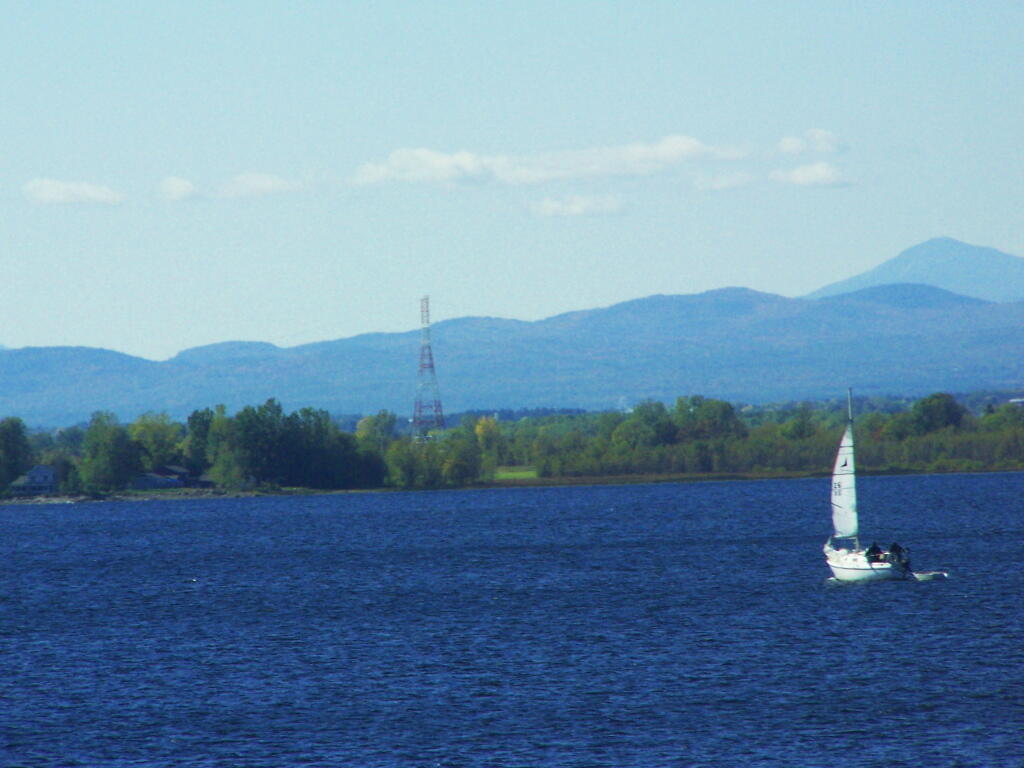Clinton County
Plattsburgh May 15, 1939
Plattsburgh
Agricultural Area around Lake Champlain
I was noticing on the National Land Cover Dataset how relatively narrow the fertile agricultural land around Lake Champlain is on the map. You don't get very far from the lake before the hills and mountains turn the fantastic soil for growing into infertile rock and sand.
Altona Flat Rock
Sailing
Deja Vu – – The Adirondack Almanack
Recent news stories on both sides of Lake Champlain reported a huge, dark cloud of smoke rising above northern Clinton County. A section of the Altona Flat Rock was afire, and within a day, more than 300 acres were scorched.
Dry conditions across the North Country were cited as the reason it spread so quickly, but there were other factors I happen to be familiar with because the first book I wrote, back in 1980, was titled A History of the Altona Flat Rock. The area in question comprises fifteen square miles of uninhabited wildlands which, by nature, is a very dry environment.
Two chapters in the book help explain the volatility of the Flat Rock when it comes to fire. It is classified as a sandstone-pavement barrens: nearly level bedrock, forming a surface similar to pavement; jack pines as the dominant tree (fire is required for them to regenerate, exploding the cones and spreading the seeds); blueberry and huckleberry plants as the dominant shrubs; and lichens and mosses as the dominant ground cover. There is variation in each category, of course, but that is a near-perfect description of the Altona Flat Rock. Only 20 similar sites have been identified worldwide, five of which are in New York State.
In an enhanced, 25th-anniversary edition of my book, there is reference to “the early days of man’s history on the rock, when vast tracts were intentionally burned to produce huge crops of blueberries…. An area that had become unproductive because of an overgrowth of brush and shrubs was set afire. These ‘burn-overs’ were controlled as much as possible.” Because of natural conditions and sparse, primitive equipment, containing them was dicey at best.
In the late 1800s and early 1900s, burn-overs were common practice at the end of a berry season, leading to roughly a decade of explosive blueberry growth. This was important to the region’s economy, which was similar to parts of Maine and Quebec, where large, flat-rock blueberry tracts generated sales into the millions of dollars.

